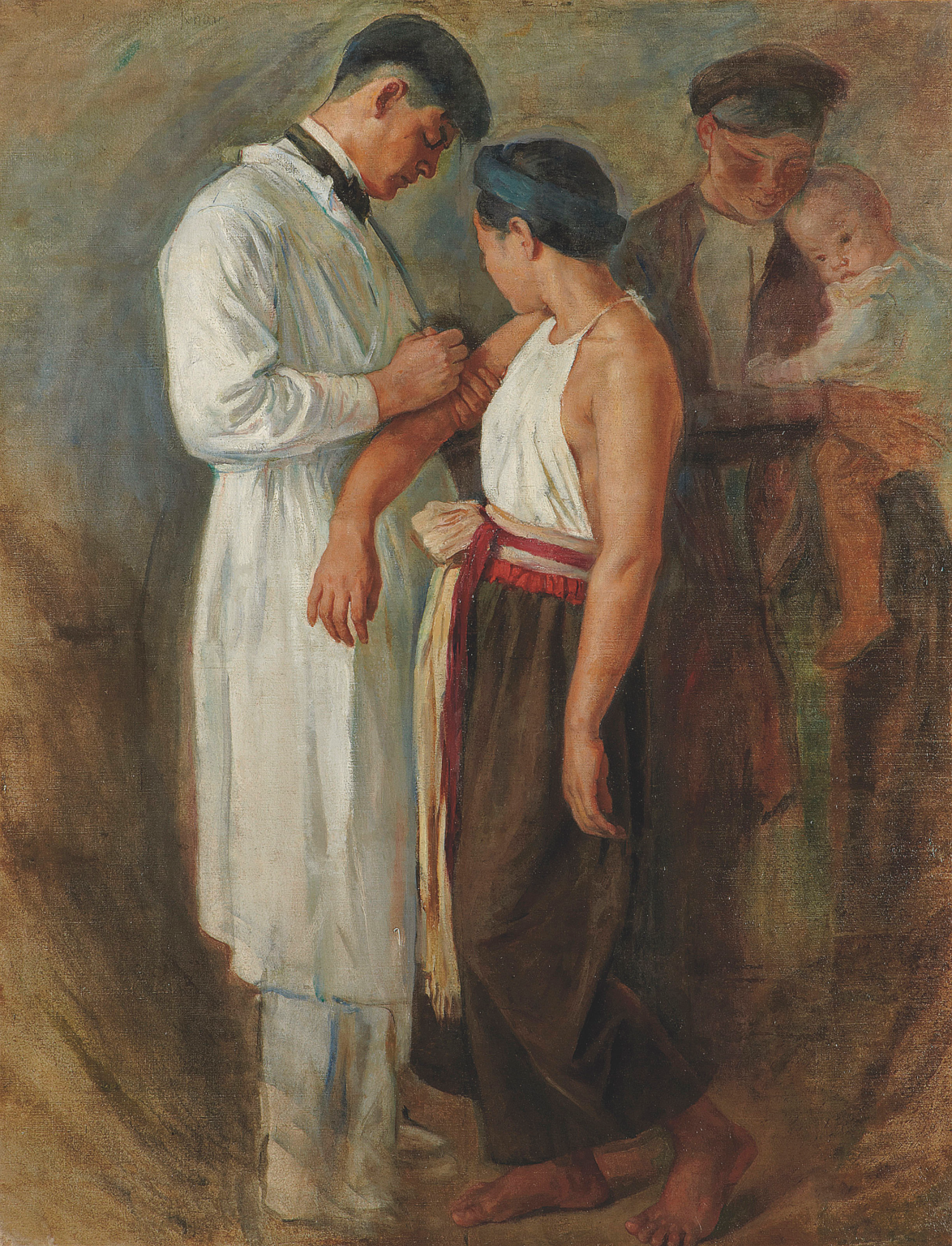
Victor Tardieu (French, 1870-1937)
La Vaccination
oil on canvas
119 x 90 cm. (46 7/8 x 35 1/2 in.)
Painted circa 1923
La Métropole: la science dispense au peuple d’Annam ses bienfaits, Portrait de femme à l'éventail, Maternities, La Vaccination, La Tonkinoise, and La Vietnamienne à l'Enfant are Victor Tardieu's subjects defined for the major fresco 160m2 to compose an ode on progress.
The most beautiful epics are always the result of chance and necessity. The art of Victor Tardieu is no exception to this rule. When Victor Tardieu first arrived in Hanoi on February 2nd 1921, he was already aged fifty one and had just received the Prix de l'Indochine the previous year. The prize allowed him one return trip from France to Vietnam and free travel throughout the region of Indochina with accommodation guaranteed. His mission was to paint the natural and social landscape of the country, and to bring the completed works back to France. At that time, he was already a well known painter who had also won the Prix Nationa for a large-scale public mural. On that significant day in February 1921 Tardieu did not expect his trip to turn into an epic journey which would result in the creation of the acclaimed Indochina School of Fine Arts, nor that until his death in Hanoi in 1937, he would strive to assure the exceptional success of this academy which honored Vietnamese cultural history. The first hint took place when he prolonged his stay in Vietnam after receiving a commission to create a major fresco for the University of Indochina which was in construction at the time.
For this project, Tardieu first created a series of smaller paintings, dated between 1922 and 1924, depicting the main characters used for the fresco. La Vaccination, along with Maternities, La Tonkinoise, and La Vietnamienne à l'Enfant are Victor Tardieu's subjects defined for the major fresco 160m2 to compose an ode on progress. Some commentators – superficial – found in this work what they will call a "colonial" message. However, it is easy to distinguish on the eminently Vietnamese Cong Tam Quan portal, on two columns, the following sentences written in Chinese: "The elites are the essence of the country. The university is the foundation of education." Further, at the bottom of the work, a Latin sentence is inscribed: "Alma mater, ex te nobis, dignitas, libertas, Felicitas" (supreme mother, it is from you that we receive dignity, liberty and happiness). From this immense composition, an ode to education and progress, the image of love, femininity and Vietnamese among other themes only shows Tardieu’s love for Vietnam.
This present lot, La Vaccination (Lot 2239), perfectly illustrates his state of mind during this important period: that only through the West meeting the East can true progress be made. Within this composition, Tardieu advocated that scientific progress such as medicine would eventually free Vietnam from the devastation of suffering and political instability. Additionally Tardieu also evoked the medical contributions of his fellow Frenchmen, the doctors Pasteur, Calmette and Yersin. However in La Vaccination it is a Vietnamese and not a French doctor who injects the vaccine into the arm of a graceful Tonkinese girl. Within this work, Tardieu embodies a wish for the collaboration and unity between France and Vietnam to eventually allow Vietnam to come into its own. The sign of Tardieu's hopes for a bright future is portrayed through the young child clasped in his mother's arms.
Jean-François Hubert
Senior Expert, Vietnamese Art










